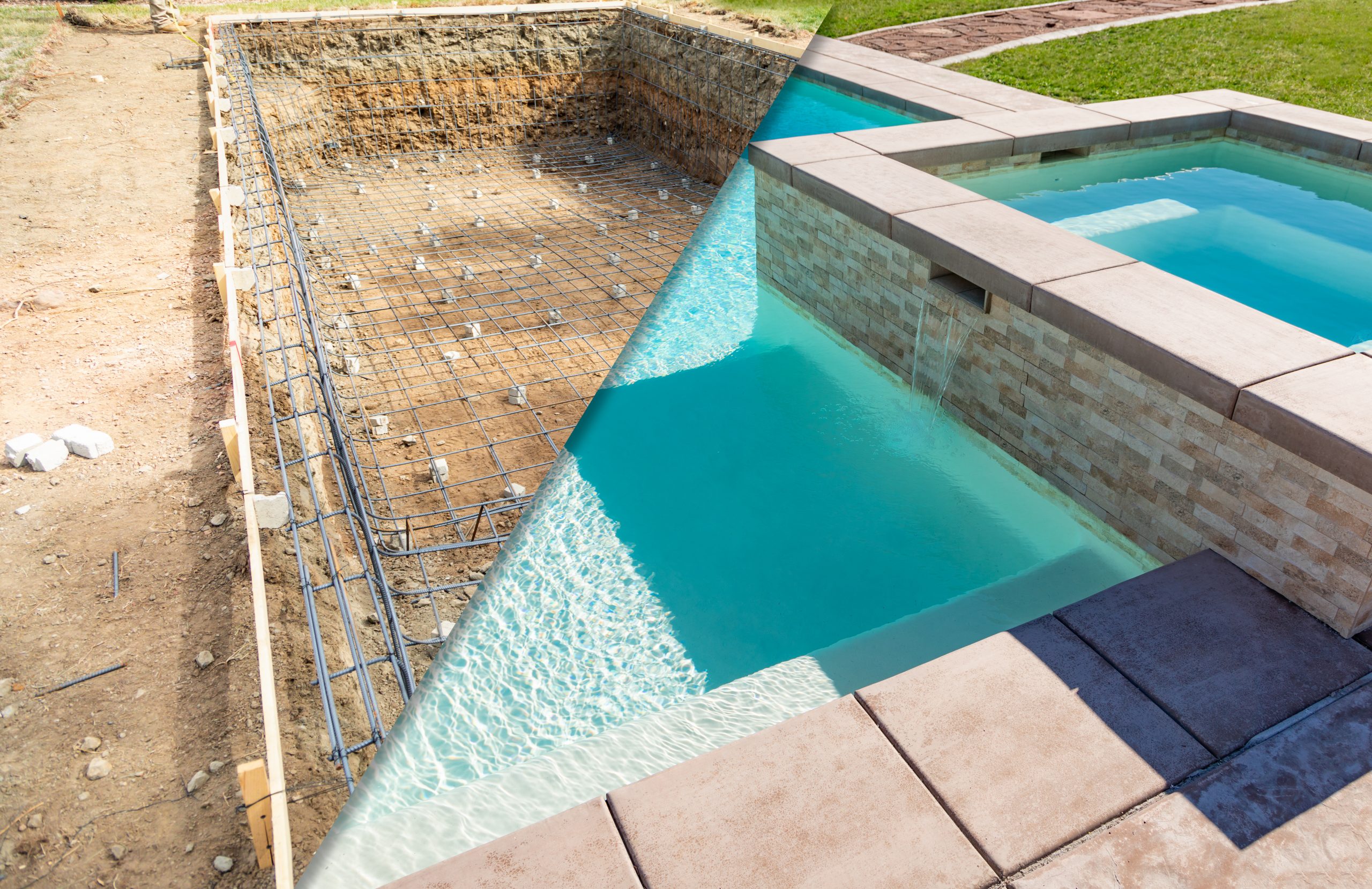
A swimming pool uses a complex plumbing network to circulate and clean the water. With most pool plumbing components hidden behind walls and underneath the floor, most people have poor knowledge about how a pool works.
Studying a swimming pool plumbing diagram can improve your knowledge and make it easy to understand the basics. In this article, we discuss diagram types and common FAQ’s.
Pool Plumbing Diagram Types
A swimming pool diagram shows how the various components of your swimming pool’s filtration network are connected. It’s a schematic representation detailing how the pool pump, filter, heating, and sanitization equipment interact. Both above-ground pool plumbing diagrams and in-ground diagram designs can look similar, so make sure you look carefully.
- Filtration Diagram – A filtration diagram shows the hydraulic design of a swimming pool. It helps visualize the water’s route when leaving and reentering the pool while showing the correct position of the valves and non-return valves. These diagrams also show an accurate placement of the pipes in the filtration network and how they’re connected. It shows the line and valve connections between the pool and the pool room.
- Pool Connection Schematic – The pool connection schematic explains the water’s path through the filtration apparatus to help you understand how a swimming pool operates. It shows the location of various swimming pool equipment such as filters, heating, and disinfection. A pool connection schematic doesn’t show the calibrated pool equipment and is used in a pool with a skimmer but not an overflow pool.
- Hydraulic Plan – The hydraulic plan shows the equipment and pipes in the pump room that facilitates water filtration and treatment to ensure a safe swimming experience. A hydraulic circuit comprises two interconnected plans: the layout plan and the technical room plan. The layout plan shows the layout of the sealed parts of the pool – bottom drains, inlets, lights, and brush socket. While the technical room plan provides the exact pool measurements – length, width, and height. The pool plumber installing the filtration apparatus must follow this plan to a T.
Pool Plumbing Diagram FAQ’s
If you’re new to the pool-owning scene, you might have a few questions when looking at the plumbing pool diagram. This FAQ helps to answer some of the most common questions.
- What Are the Two Drains at the Bottom of My Pool? – There are two main drains at the bottom of the pool to prevent main drain entrapment. Sometimes the suction at the pool with a single drain is so great that swimmers can get stuck in or on the drain. It’s part of the VGB ACT of 2007 mandated changes to prevent swimming pool fatalities.
- Do I Need a Check Valve in My Pool Plumbing? – Your pool plumbing needs a check value if you have fountains, a solar heater, a raised spa, or a raised pool pump. You’ll also need a check valve if you have a pool chlorinator, a spa blower, or spa overflow lines in your pool. This pool valve keeps the water flowing in one direction and stops the backflow when the pump is turned off.
Get Super Terry! You won’t be disappointed.
Each swimming pool uses a complex plumbing system to filter and circulate the water to keep it clean and usable. Understanding where each element is located in a swimming pool plumbing diagram is helpful – however, these diagrams can be difficult to understand. So, when in doubt, give us a call at Terry’s Plumbing! As your reputable plumber in Pittsburgh, we can help you with your plumbing-related issues. Call today at 412-364-9114.
 (412) 364-9114
(412) 364-9114
